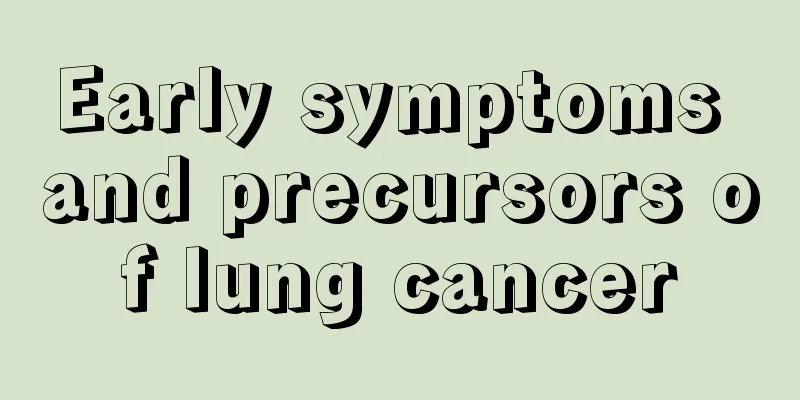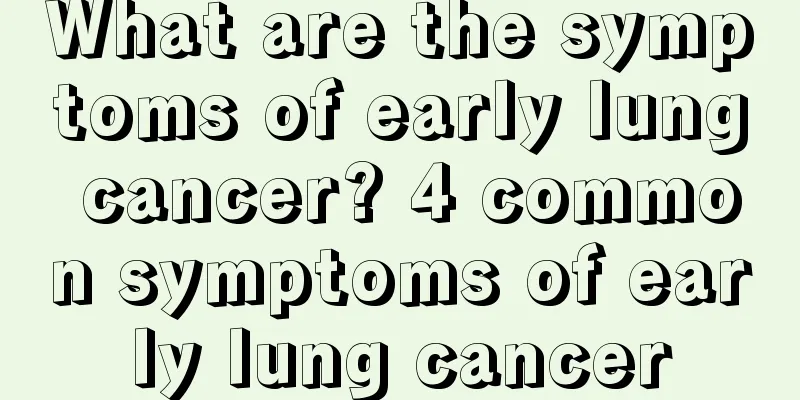Early symptoms and precursors of lung cancer

|
Early symptoms and signs of lung cancer include persistent cough, chest pain, dyspnea, hoarseness, weight loss, etc. Timely detection and medical treatment are the key to improving the cure rate. Early symptoms of lung cancer are often not obvious and are easily ignored, but through regular physical examinations and paying attention to physical changes, early detection and treatment measures can be taken. 1. Persistent cough is a common early symptom of lung cancer. The cough may be dry or accompanied by a small amount of sputum, lasting for a long time, and conventional cough suppressants are not effective. If the cough does not improve for more than two weeks, especially with bloody sputum, you should see a doctor as soon as possible for a chest CT scan. 2. Chest pain is also one of the early signs of lung cancer. The pain may be dull or stabbing, often located on one side of the chest, and sometimes radiating to the shoulder and back. Chest pain may be related to the tumor compressing surrounding tissues or invading the pleura. If chest pain persists or worsens, imaging examinations should be performed in time to rule out the possibility of lung cancer. 3. Dyspnea is an important early symptom of lung cancer. Tumor growth may block the airway, causing difficulty breathing, especially after activities. If unexplained dyspnea occurs, especially with wheezing or shortness of breath, be alert to the possibility of lung cancer and seek medical attention as soon as possible. 4. Hoarseness may be related to lung cancer invading the recurrent laryngeal nerve. The voice change lasts for a long time and there is no obvious cause, such as a cold or excessive use of the voice. If the hoarseness lasts for more than two weeks, it is recommended to undergo a laryngoscopy and chest imaging examination to rule out lung cancer or other diseases. 5. Weight loss is one of the nonspecific symptoms of early lung cancer. Significant weight loss in a short period of time may be related to the tumor consuming energy in the body or affecting appetite. If the weight loss exceeds 5% and there is no clear reason, a full-body examination should be performed, including lung imaging examination. Early detection and treatment of lung cancer are crucial. The cure rate of lung cancer can be improved through regular physical examinations, paying attention to physical changes, and seeking medical treatment in a timely manner. For high-risk groups, such as long-term smokers and those with a family history, annual low-dose chest CT screening is recommended to detect lesions early. Treatments for early lung cancer include surgical resection, radiotherapy, and targeted therapy, and specific plans need to be formulated according to the patient's condition. Maintaining a healthy lifestyle, such as quitting smoking, eating a balanced diet, and exercising moderately, can also help reduce the risk of lung cancer. |
<<: Is there any point in treating advanced lung cancer at the age of 70?
>>: How long does it take for primary liver cancer to form
Recommend
What are the uncomfortable symptoms of thyroid cancer
Thyroid cancer is a malignant tumor originating f...
Suitable diet for liver cancer patients
We all know that diet is the main source of nutri...
Some tips on how to prevent prostate cancer. Preventive measures for prostate cancer
Prostate cancer is very harmful to patients. It n...
What to do if a bee stings you and it itches
After being stung by a bee, a lower part of the b...
5 risk factors for ovarian cancer
Ovarian cancer is one of the most common malignan...
Can breast cancer be completely cured? Four common symptoms of breast cancer
Breast cancer occurs not only in women, but also ...
Why does hot pot cause internal heat
In life, many people like to eat hot pot, especia...
What kind of milk powder is good for newborns? Three major brands tell you
In order to supplement the nutritional needs of n...
What are the clinical symptoms of lung cancer? Pay attention to these four points
Knowing the clinical symptoms of lung cancer can ...
Why is my shoulder so stiff?
Technology changes life. Some jobs nowadays often...
What to do if there are small bumps on both sides of the arms
When you put on short sleeves and long skirts in ...
How to clean white soles
In life, many women like to wear a pair of white ...
Are there any dangers of wearing colored contact lenses with a certain degree
Colored contact lenses are a kind of flat contact...
The hazards of light wave rehabilitation therapy device
In the past, when children returned home, they wo...
Eyeballs suddenly become bloodshot
The whites of a normal person's eyes are whit...









